Lucas Moraes' Photos Are So Intimate, They're Almost Too Beautiful to Handle
Explore the mesmerizing work redefining the sensuality of the queer body.
Lucas Moraes didn't grow up in an environment where softness was safe. Raised in a small town in Ceará, Brazil, in the early nineties, he learned early, like many queer youth, how to shrink parts of himself to survive. Constantly “adapting, performing, and suppressing.”
He recalls that formative time: "From a very young age, I had to shape myself into something acceptable," he told us — a painful admission many of you reading can, unfortunately, relate to.
That experience of muting desire, of performing, left a mark.
It was an imprint that shaped how he internalized bodies, especially queer ones, which were complex and contradictory, yearning for liberation.
That quiet ache from his early years lives in the work he makes now, decades later, as he captures the essence of the individuals he photographs while living in Palma de Mallorca, Spain.
There's a reverence in his images — a stillness he hopes will cause you to pause and experience the world as it's built in his pictures. Whether it's a body half-submerged in water or stretched across stone, Lucas is showcasing humanity at its rawest and most honest.
Uncovering Who We Are
When discussing his work, Lucas describes the male body not as a symbol or object but as a landscape — one that holds memory, discomfort, sensuality, and joy. "I'm interested in the body not as a spectacle but as a landscape — something full of stories," he says.
That attention to emotional detail is what makes his work feel so intimate.
He's also not afraid to explore contradiction. Many of his subjects are caught in moments of both surrender and tension, leaning into a wave or lost in the fog. "I think my personality shows in the way I approach subjects," he says, "with softness, respect, and a desire to uncover something genuine."
The Space Between
His most recent project centers on the body's relationship to water — how it yields to the tide or holds its shape. One standout image from the collection, titled The Silence Between, was taken just after the model had given up on another attempt. "We had already decided to stop," Lucas told us. "And then, unexpectedly, he jumped — and I caught the shot."
The figure hangs in mid-air, just before entering the sea, suspended in a moment, an in-between. A feeling we have all experienced, even if only metaphorically, captured beautifully in a single second.
That's where Lucas's work exists — in the space between motion and rest, eroticism and restraint, presence and disappearance. His photography invites you to sit and reflect on your own experiences through his work.
To hear more from Lucas in his own words. Continue reading our interview below.
GAYETY: Hey Lucas! How are you doing today? What are you currently working on?
LUCAS: I'm doing well, thank you. Living on an island, this time of year feels like the perfect moment to deepen my ongoing exploration of the relationship between the body and water. I'm working on a new series that pushes that connection further —physically and emotionally. I'm especially drawn to the tension between stillness and force: how the body surrenders to water, but also how it resists, floats, struggles. Being surrounded by the sea inspires me daily, and it feels like the work is unfolding naturally from the rhythm of the island itself.
Can you tell us a little about this collection for Gayety?
This collection is a visual meditation on the male body in raw, instinctive states. It brings together moments of solitude, sensuality, and surrender — images where the subject seems absorbed by their surroundings, sometimes emerging from nature, sometimes dissolving into it. Whether it's someone floating in dark water, walking through fog, or standing bare against stone, each photo carries a quiet emotional charge. I wanted the collection to feel sincere and physical, not decorative — a space where eroticism is felt, not shown.
Most of your images are taken in natural settings, but a few are shot in the studio. Why did those photos need to be shot in a more controlled setting?
Nature gives me surprise, movement, and atmosphere. But the studio gives me control over light and gesture. In this series, I used the studio to highlight form and structure— almost like referencing classical sculpture, but through a queer, contemporary lens. It allowed me to isolate the body from any narrative or landscape and focus on it as a presence: vulnerable, strong, awkward, real.
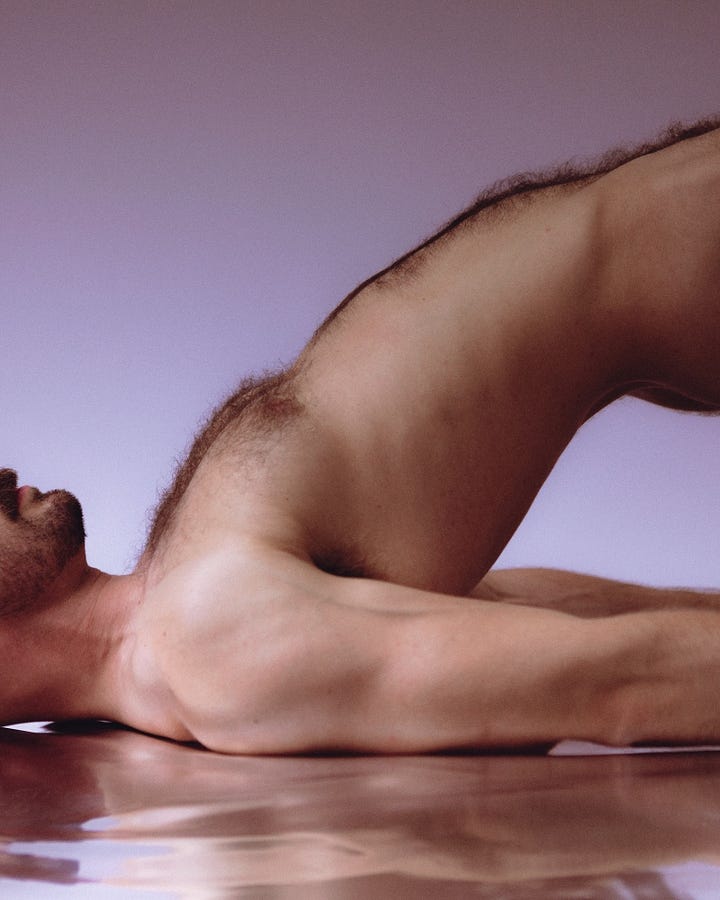
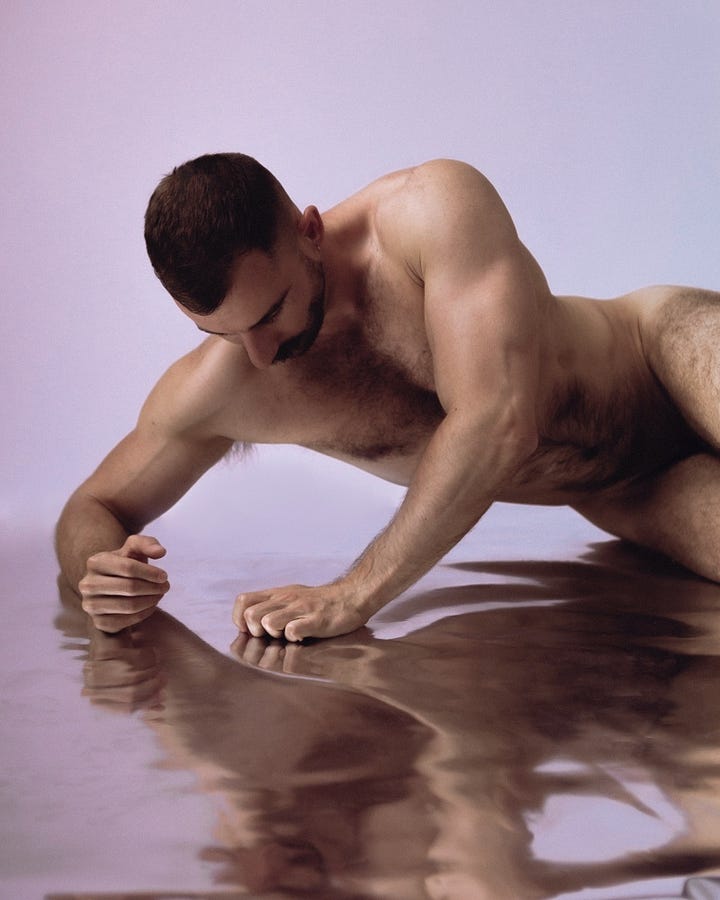
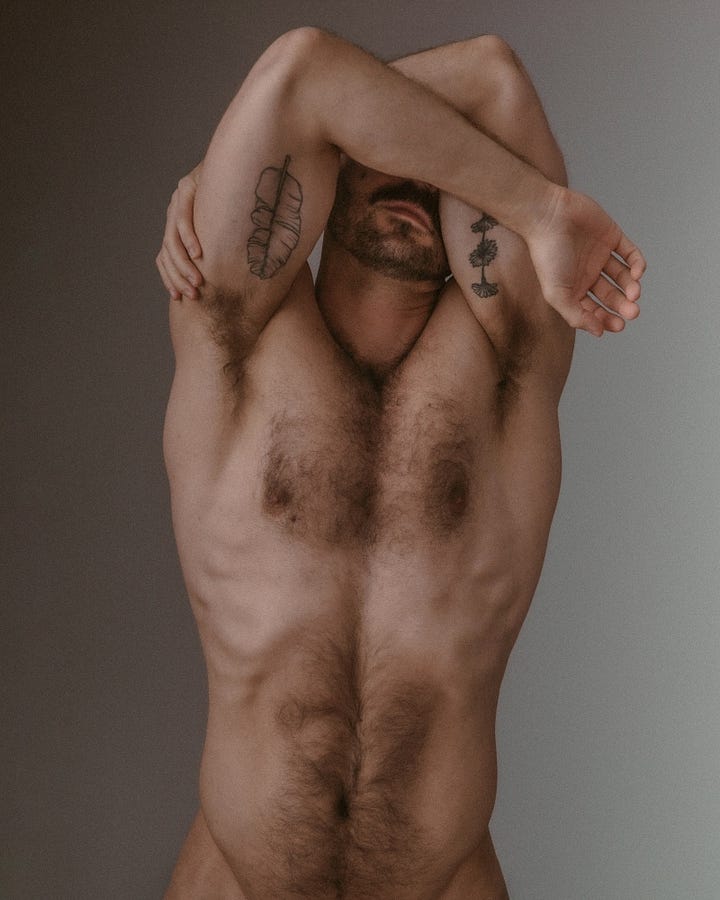
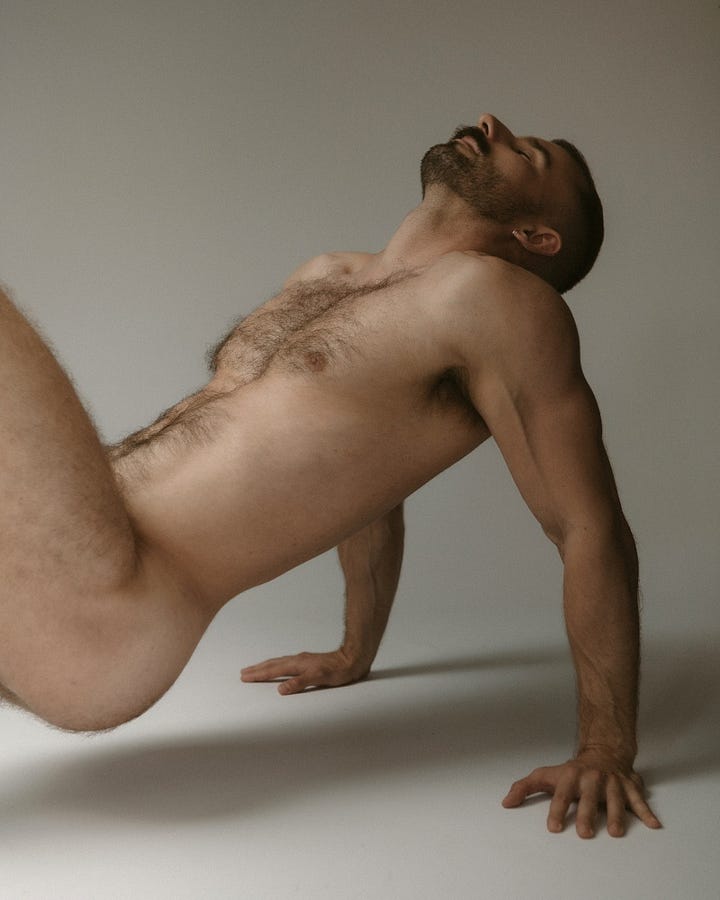
Is there a photo from this collection that best embodies your style?
Yes — there's an image of a man standing in the water at twilight, his head bowed, arms at rest. The light is soft, and the surface of the sea seems to hold him. That photo captures everything I care about: silence, emotion, sensuality, and the connection between the human body and the natural world. It's simple, but to me, it says a lot.
How has your style evolved since you started shooting?
At first, I was looking for control, clean images, strong compositions, beautiful light. But over time, I've let go of that need for perfection. Now I'm more interested in what happens in between moments: when someone exhales, when the body relaxes, when water moves unpredictably. My style has become more emotional, more textured. I'm less concerned with aesthetics and more with presence — how a photo can feel instead of just look good.
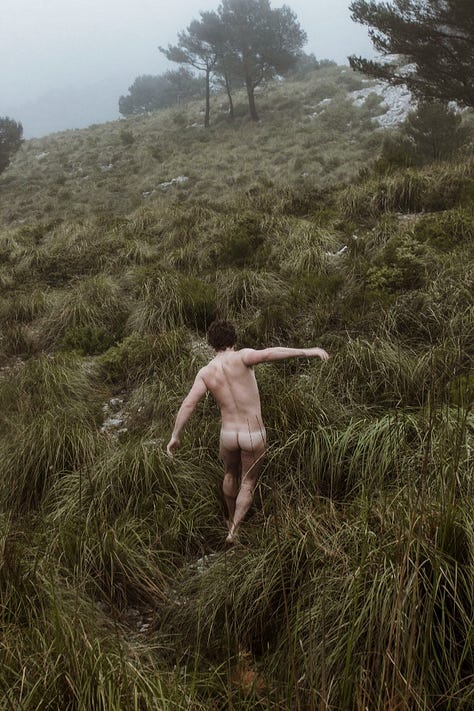
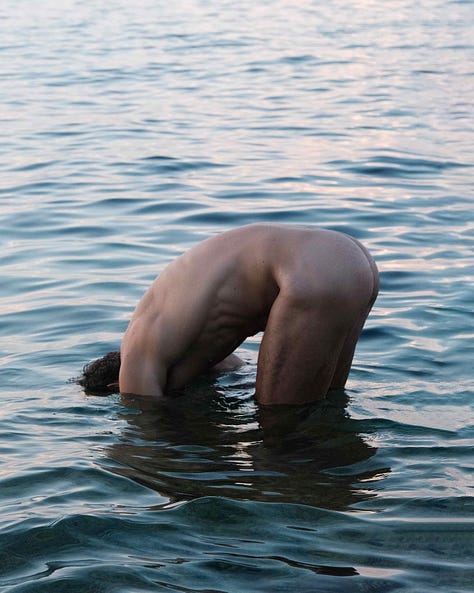
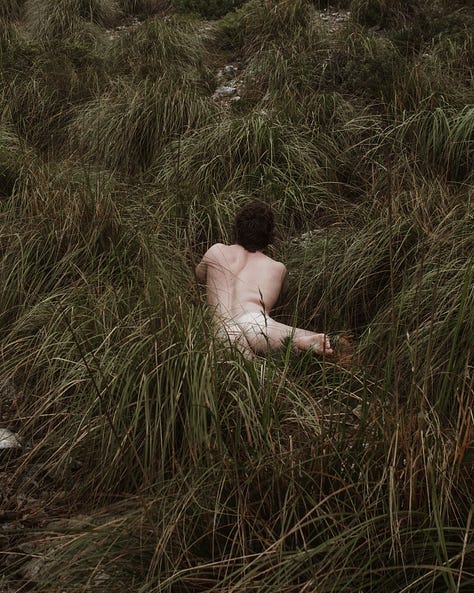
Do you remember the first nude portrait you took?
Yes. It was a friend I trusted deeply, and we shot it in my tiny apartment in São Paulo using just window light and a curtain. I was nervous — not about the nudity, but about holding the moment with the respect it deserved. That first portrait wasn't polished, but it was real. It opened something in me: the idea that photography could be a space of connection, vulnerability, and mutual trust.
Why in nude male portraiture do you feel photos featuring the penis are often categorized as explicit while images of fully nude women don't carry that same title?
It reflects deeper discomforts around male vulnerability. The penis, in particular, is politicized, sexualized, even feared. It's either seen as aggressive or shameful — rarely neutral. In contrast, female nudity has been aestheticized and normalized for centuries, especially through the male gaze. So when we photograph the male body, especially in a non-dominant or intimate way, it challenges those narratives — and that discomfort often leads to censorship.
Does keeping the penis out of view helps or harms normalizing the male body in art?
It depends on the intention. If it's hidden out of fear or marketability, then yes — it reinforces shame. But if it's a choice rooted in the emotion or narrative of the image, it can still be powerful. I don't think normalizing means showing everything all the time — it means creating space for many ways of seeing the male body: erotic, soft, strong, abstract, awkward, emotional. Real normalization comes from variety, not from any single formula.
We always ask artists what they hope people feel or take away from their work.
I hope people feel something real — maybe tenderness, maybe reflection, maybe desire. I want them to slow down, breathe with the image, and connect to the physicality of the body without judgement or expectation. I want my work to offer a space where softness is strength, where the male body can be seen not just as a symbol of power, but as something vulnerable, beautiful, and human.
To keep up with Lucas’ journey and see more of his work, be sure to follow him on Instagram or check out his website!












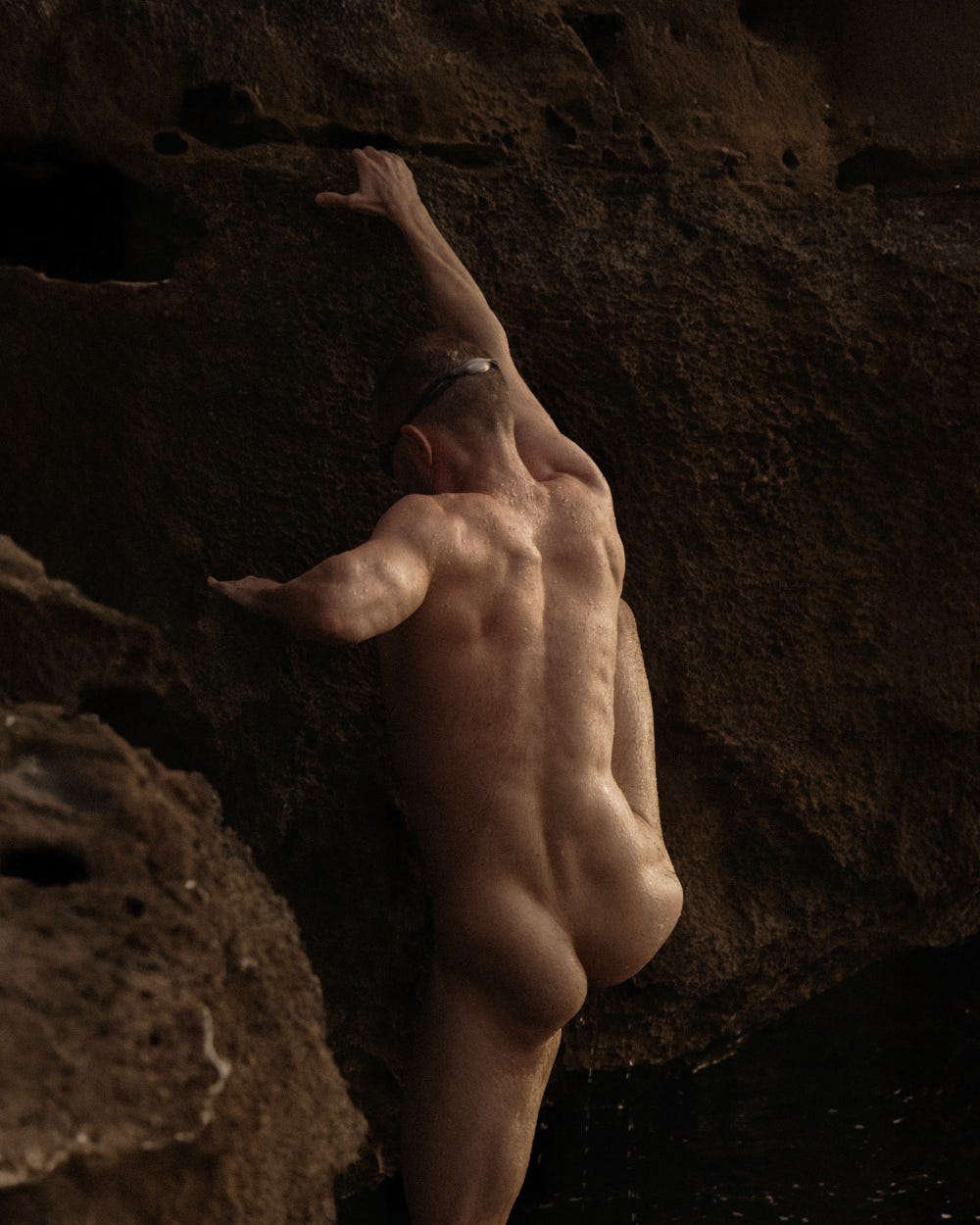
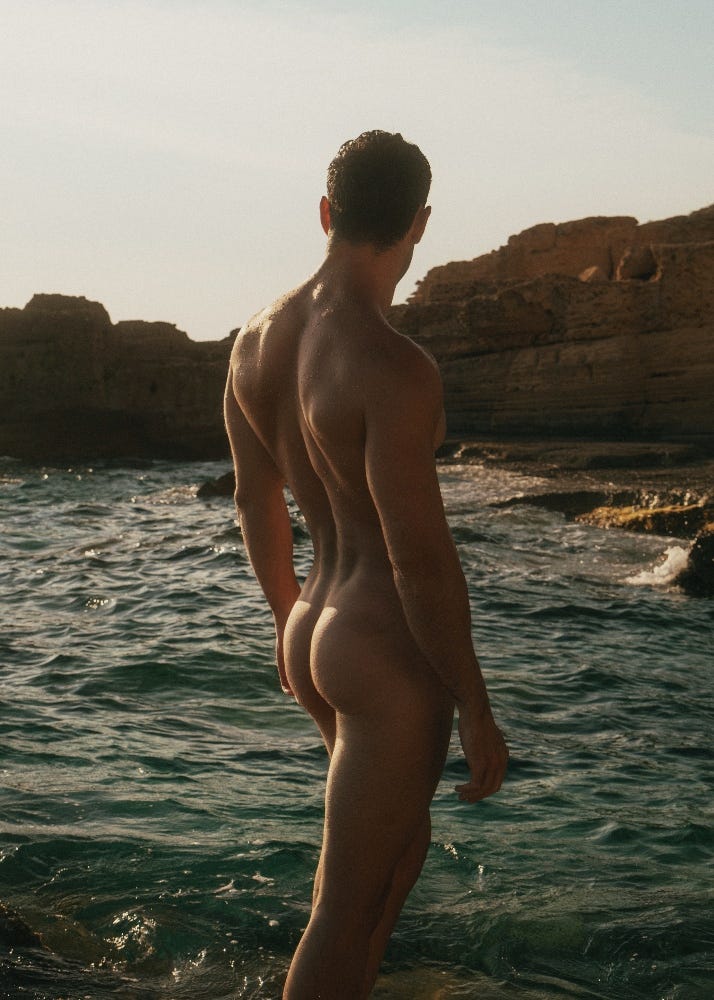
Gorgeous work! Bravo 👏
His composition & use of lighting reveal his work to be of the highest quality.